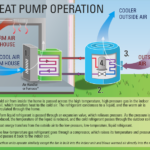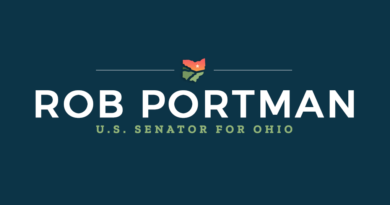Inflation Reduction Act and Tax Credits for Energy-Efficient Home Improvements – Kiplinger’s Personal Finance
Energy Disrupter

If you’re planning a few home improvements that will boost the energy efficiency of your house, keep your fingers crossed and hope that the Inflation Reduction Act gets through Congress. One of the bill’s main goals is to address climate change and slow down global warming. And while the legislation would primarily help businesses adopt more eco-friendly measures and jump-start clean energy production, there are incentives for ordinary Americans to go green and save money, too.
For example, homeowners could cut their tax bill even more in the future if they install new energy-efficient windows, doors, water heaters, furnaces, air conditioners, and the like. That’s because the legislation would extend and enhance two tax credits that reward “green” upgrades to your home. (There are also new tax breaks for the purchase of electric vehicles.) Low- and moderate-income families could also get rebates if they purchase energy-efficient appliances.
The U.S. Senate has already passed the Inflation Reduction Act. The House of Representatives is scheduled to vote on the bill on Friday, August 12. If it passes in the House, which is expected to happen, off it goes to President Biden’s desk for his signature. Once it’s signed into law, it will be a little easier going green for American homeowners.
[For more information on tax provisions in the bill, see The Inflation Reduction Act and Taxes: What You Should Know.]
Energy Efficient Home Improvement Credit
One of the tax credits that homeowners may be familiar with – the Nonbusiness Energy Property Credit – actually expired at the end of 2021. However, the Inflation Reduction Act would bring it back to life, improve it substantially, and even give it a new name – the Energy Efficient Home Improvement Credit.
The old, expired credit was worth 10% of the costs of installing certain energy-efficient insulation, windows, doors, roofing, and similar energy-saving improvements in your home. You could also claim the credit for 100% of the costs associated with installing certain energy-efficient water heaters, heat pumps, central air conditioning systems, furnaces, hot water boilers, and air circulating fans. However, there was lifetime limit of $500 for the credit (e.g., credits taken in previous years count towards the limit). There was also a $200 lifetime limit for new windows. These limits severely restricted the overall value of the credit. There were also other individual credit limits for air circulating fans ($50); some furnaces and boilers ($150); and certain water heaters, heat pumps, and air conditioning systems ($300).
Under the Inflation Reduction Act, the revised credit would be equal to 30% of the costs for all eligible home improvements made during the year. It would also be expanded to cover the cost of certain biomass stoves and boilers, electric panels and related equipment, and home energy audits. Roofing and air circulating fans would no longer qualify for the credit, though. Some of the energy-efficiency standards would be updated as well.
In addition, the $500 lifetime limit would be replaced by a $1,200 annual limit on the credit amount (the lifetime limit on windows would go away, too). So, if you spread out your qualifying home projects, you can claim the maximum credit each year. The annual limits for specific types of qualifying improvements would also be modified – and for the better. If the bill is enacted, they would be:
- $150 for home energy audits;
- $250 for an exterior door ($500 total for all exterior doors);
- $600 for exterior windows and skylights; central air conditioners; electric panels and certain related equipment; natural gas, propane, or oil water heaters; natural gas, propane, or oil furnaces or hot water boilers; and
- $2,000 for electric or natural gas heat pump water heaters, electric or natural gas heat pumps, and biomass stoves and boilers (for this one category, the $1,200 annual limit may be exceeded).
For eligible home improvements after 2024, no credit would be allowed unless the manufacturer of any purchased item creates a product identification number for the item, and the person claiming the credit includes the number on his or her tax return.
Finally, the revised credit would be extended through 2032.
Residential Clean Energy Credit
The second credit homeowners should be eying is the current Residential Energy Efficient Property Credit, which also would get a new name if the Inflation Reduction Act is passed. It would then be called the Residential Clean Energy Credit. The credit, which is currently scheduled to expire in 2024, would be extended through 2034 as well.
In addition to a name change and extension, the Inflation Reduction Act would also boost the credit amount. Right now, the credit is worth 26% of the cost to install qualifying systems that use solar, wind, geothermal, biomass or fuel cell power to produce electricity, heat water or regulate the temperature in your home. (The credit for fuel cell equipment is limited to $500 for each one-half kilowatt of capacity.) The credit amount is currently scheduled to drop to 23% in 2023 and then expire in 2024. Under the Inflation Reduction Act, the credit amount would jump to 30% from 2023 to 2032. It would then fall to 26% for 2033 and 22% for 2034. The credit would then expire after 2034.
The scope of the credit would be adjusted under the Inflation Reduction Act, too. It would no longer apply to biomass furnaces and water heaters, but it would apply to battery storage technology with a capacity of at least three kilowatt hours.
High-Efficiency Electric Home Rebates
Although not a tax credit, the High-Efficiency Electric Home Rebate Program would also help American families go green if the Inflation Reduction Act becomes law. The program would provide rebates to low- and middle-income families who purchase energy-efficient electric appliances. To qualify for a rebate, your family’s total annual income would have to be less than 150% of the median income where you live.
Qualifying homeowners could get rebates as high as:
- $840 for a stove, cooktop, range, oven, or heat pump clothes dryer;
- $1,750 for a heat pump water heater; and
- $8,000 for a heat pump for space heating or cooling.
Rebates for non-appliance upgrades would also be available up to the following amounts:
- $1,600 for insulation, air sealing, and ventilation;
- $2,500 for electric wiring; and
- $4,000 for an electric load service center upgrade.
There would be limits on the amount certain families can get, though. For instance, a rebate couldn’t exceed 50% of the cost of a qualified electrification project if the family’s annual income is between 80% and 150% of the area median income. Each qualifying family would also be limited to no more than $14,000 in total rebates under the program.
Original Source: https://www.kiplinger.com/taxes/605069/inflation-reduction-act-tax-credits-energy-efficient-home-improvements
















